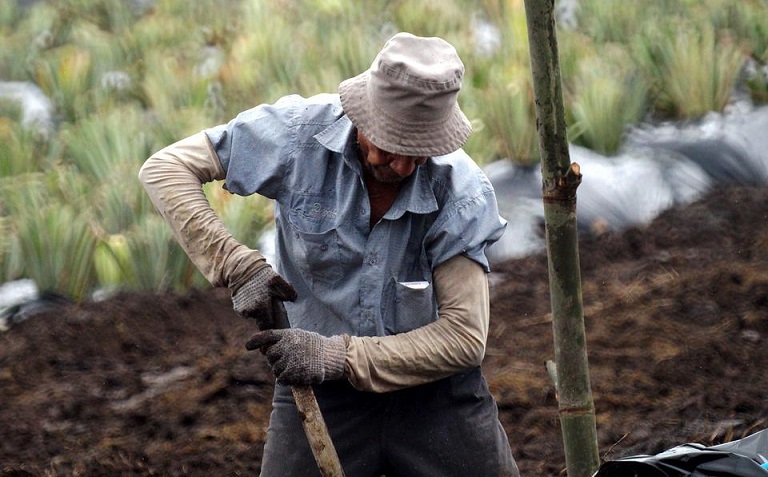The neoliberal ideology introduced in the region in the 1980s exacerbated social injustice, which continues to affect the lives and working conditions of large swaths of the population characterised by poverty, unemployment and underemployment – issues that particularly affect indigenous and Afrodescendent groups.
 Juan J. Paz-y-Miño Cepeda
Juan J. Paz-y-Miño Cepeda
These inequalities have been evident in indigenous societies since the period that archaeologists describe as “regional development”, with señoríos (feudal estates), cacicazgos and curacazgos (chiefdoms).
The great Aztec, Maya and Inca imperialist cultures were based on deep-seated hierarchical divisions and clear social inequalities.
But Spanish conquest and colonisation undoubtedly set in motion the process that paved the way for contemporary inequality. During the colonial period, differences based on racism and classism were legally sanctioned, so that the “whites” concentrated power and enjoyed privileges in public positions, titles and education.
Indigenous people (and worse: enslaved black people) were subjected and reduced to conditions of extreme poverty, their workforce permanently overexploited.
Indigenous people were denied social mobility and education, unlike the “upper castes”.
The terrible living standards and working conditions of indigenous people and the “lower” rungs of colonial society influenced the social structure of Latin America.
 Independence: no changes
Independence: no changes
The independence and constitution of nation states did nothing to change the situation.
Slavery continued until at least the mid-nineteenth century, while the population was excluded from “democracy” if they did not have minimum incomes and could not read
or write. And indigenous people were specifically marginalised.
The hegemony of landowners and merchants allowed them to enjoy the privilege of legally recognised wealth. It was the liberals and radicals who gradually changed this inheritance, recognising individual and universal rights and the legal equality of citizens – although this census-based citizenship continued to be restricted until well into the twentieth century.
The judicial and legal principle of “equality”, derived from enlightenment thought and republican philosophy, has prevailed in the twentieth century, masking the social inequalities that the economic reality always imposed. The development of the economy has allowed us to not only see social inequalities, but to measure them.
The reinforcement provided by economic history has undoubtedly played a key role.
 Role of the economy
Role of the economy
It was not until the 1920s and 1930s that the economy became a career or specialisation in its own right, though not in all countries. Study of the economy was generally reduced and linked to the training of lawyers.
“Economic theory”, in particular, came from the large, central, capitalist countries, and it was not uncommon for its authors to be held up as indisputable authorities.
Economic studies slowly began to examine the national realities of various countries, and patchy statistics on new issues were gathered – in contrast to the existing traditional, and very basic, statistics on foreign trade and public finances.
The boom in the Latin American economy is linked to the “populist” governments in power during the first few decades of the twentieth century; the faculties of economics founded; the creation of global blocs (capitalism, socialism and third world) after World War II; the establishment of international bodies following the Bretton Woods Agreement, particularly the activities of the Economic Commission for Latin America and the Caribbean (ECLAC), created in 1948; and especially the developmental policies of the 1960s and 1970s.
Today, we have a wealth of studies on Latin America that shine a light on the issue of social inequality.
 Inequality in Latin America
Inequality in Latin America
The covid pandemic deepened social inequalities, and the situation has yet to be restored to pre-2020 levels. For example, inequality in Ecuador has worsened: in 2019 the monthly per capita income of the richest 5% was 43.28 times higher than that of the poorest 5%, while in 2020 it was 59.25% higher.
n 2021, it was 47.68% and in 2022, 47.72%. And the issue is so important that the Sustainable Development Goals (agreed by the UN in 2015 to be achieved by 2030) include no poverty, zero hunger, gender equality and reduced inequalities. The economic backdrop of social inequality is not only the result of historic exclusion, human exploitation and the concentration of wealth in the hands of minorities (made up of the dominant classes in the different stages of Latin American nations’ history), it is also a reality stemming from the power of the state, seized by these wealthy minorities.
Consequently, the solutions to the social inequality problem are not only grounded in its theoretical recognition and the formulation of economic policies designed to redistribute wealth; they also depend on a restructuring of the conditions of power. This perspective is gaining ground in Latin America, to the extent that there is now a process of social construction and awareness (whose future is uncertain) of the need to overcome social inequalities and to move forward towards the inevitable impact on the wealth-hoarding class. PL
(Traducido por Rebecca Ndhlovu) – Photos: Pixabay












.jpg)












